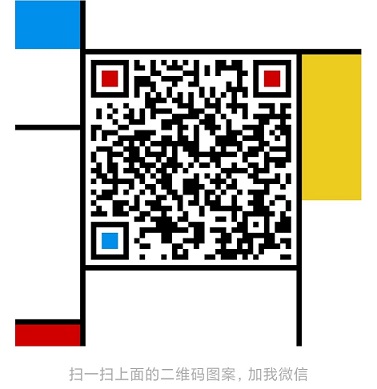前言
接上篇
【ORACLE】18c版本的限定表达式及其在21c版本的增强
上篇最后说到了迭代器,由于内容太多,所以和本篇放一起了。
在迭代器中,除了上篇说的三种迭代器(基本、索引、序列)外,还支持多种关键词组合使用。
类似"for i in 1..10" 这种,被称之为迭代器(iterator),既可以用于限定表达式,也可以用于for loop循环,是共用的语法,所以本篇不会对每种用法都分别写两种例子,读者可自行尝试修改成限定表达式的写法或者for loop的写法。
for loop语法
[ label ] for_loop_header
statements
END LOOP [ label ];
for_loop_header ::= FOR iterator LOOP
iterator ::= iterand_decl [, iterand_decl] IN iteration_ctl_seq
iterand_decl ::= pls_identifier [ MUTABLE | IMMUTABLE ] [ constrained_type ]
iteration_ctl_seq ::= qual_iteration_ctl [,]...
qual_iteration_ctl ::= [ REVERSE ] iteration_control pred_clause_seq
iteration_control ::= stepped_control
| single_expression_control
| values_of_control
| indices_of_control
| pairs_of_control
| cursor_control
pred_clause_seq ::= [ stopping_pred ] [ skipping_pred ]
stopping_pred ::= WHILE boolean_expression
skipping_pred ::= WHEN boolean_expression
stepped_control ::= lower_bound .. upper_bound [ BY step ]
single_expression_control ::= [ REPEAT ] expr
下面这段官方可能是写错了,“cursor_iteration__control”其实对应上面的“cursor_control”,而且还存在两个明显的输入错误 "_"重复了,"cursor _object"多了一个空格
cursor_iteration__control ::= { cursor _object
| sql_statement
| cursor_variable
| dynamic_sql }
qual_iteration_ctl
REVERSE
"REVERSE"(不是21c添加的),为对后面的元素进行倒序排列
begin
for i in REVERSE 1 .. 5 loop
dbms_output.put_line ( i );
end loop;
end;
/
---
5
4
3
2
1
iteration_control
BY (stepped_control)
先看例子
SET SERVEROUTPUT ON;
DECLARE
TYPE t_tab IS TABLE OF VARCHAR2(10) INDEX BY pls_integer;
l_tab t_tab := t_tab(for i in 1..10 by 2 sequence => i);
BEGIN
FOR I IN 1 .. l_tab.COUNT LOOP
DBMS_OUTPUT.put_line(i||':'|| l_tab(I));
END LOOP;
END;
/
---
1:1
2:3
3:5
4:7
5:9
"by" 在 for loop 中的使用
begin
for i in 1 .. 10 by 2 loop
dbms_output.put_line ( i );
end loop;
end;
/
---
1
3
5
7
9
"by"表示对 in 的元素进行间隔选择(Step(步长)),比如上例中的2,就是每次选择向后第2个元素,所以依次是第1、3、5、7、9个元素。
single_expression_control
REPEAT
"REPEAT",按照后面的表达式循环产生元素
BEGIN
FOR i IN 1, REPEAT i*2 WHILE i < 100 LOOP
DBMS_OUTPUT.PUT_LINE(i);
END LOOP;
END;
/
---
1
2
4
8
16
32
64
VALUES OF (values_of_control)
取出数组中的值
DECLARE
TYPE intvec_t IS TABLE OF PLS_INTEGER INDEX BY PLS_INTEGER;
vec intvec_t := intvec_t(3 => 10, 1 => 11, 100 => 34);
BEGIN
FOR i IN VALUES OF vec LOOP
DBMS_OUTPUT.PUT_LINE(i);
END LOOP;
END;
/
---
11
10
34
INDICES OF (indices_of_control )
取出数组中的索引(键)
DECLARE
TYPE intvec_t IS TABLE OF PLS_INTEGER INDEX BY PLS_INTEGER;
vec intvec_t := intvec_t(3 => 10, 1 => 11, 100 => 34);
BEGIN
FOR i IN INDICES OF vec LOOP
DBMS_OUTPUT.PUT_LINE(i);
END LOOP;
END;
/
---
1
3
100
PAIRS OF(pairs_of_control )
取出 索引和值 的对(键值对)
DECLARE
TYPE intvec_t IS TABLE OF PLS_INTEGER INDEX BY PLS_INTEGER;
vec intvec_t := intvec_t(3 => 10, 1 => 11, 100 => 34);
BEGIN
FOR i,j IN PAIRS OF vec LOOP
DBMS_OUTPUT.PUT_LINE(i || '=>'|| j);
END LOOP;
END;
/
---
1=>11
3=>10
100=>34
cursor_control
sql_statement
直接用一个查询sql(不是21c添加的)
begin
for rec in (select a.region_id, a.region_name from hr.regions a) loop
dbms_output.put_line(rec.region_id || '-' || rec.region_name);
end loop;
end;
/
cursor _object
先用一个查询sql定义一个游标对象,然后直接使用这个对象(不是21c添加的)
declare
cursor c is
select a.region_id, a.region_name from hr.regions a;
begin
for rec in c loop
dbms_output.put_line(rec.region_id || '-' || rec.region_name);
end loop;
end;
/
cursor_variable
即 ref cursor动态游标(不是21c添加的)
declare
l_sql varchar2(4000):='select * from hr.regions';
l_row hr.regions%rowtype;
type cur is ref cursor;
curs cur;
begin
open curs for l_sql;
loop
fetch curs into l_row;
exit when curs%notfound;
dbms_output.put_line(l_row.region_name);
end loop;
close curs;
end;
/
dynamic_sql
即动态sql,且支持绑定变量
declare
l_sql varchar2(4000) := 'select * from hr.regions where REGION_ID<=:1';
begin
for r hr.regions%rowtype in (execute immediate l_sql using 3) loop
dbms_output.put_line(r.region_name);
end loop;
end;
/
动态sql是最能让人发挥想象力之一的了,可惜的是被这个限定type(constrained_type)限制住了。上例中,如果不定义r的type,或者用非限定type,像下面这样,会报错
declare
l_sql varchar2(4000) := 'select * from hr.regions where REGION_ID<=:1';
begin
for r in (execute immediate l_sql using 3) loop
null;
end loop;
end;
/
ORA-06550: 第 4 行, 第 13 列:
PLS-00858: 没有为 EXECUTE IMMEDIATE 迭代控制指定 iterand 类型。
ORA-06550: 第 4 行, 第 3 列:
PL/SQL: Statement ignored
另外要注意的是,动态sql的这种方式不能用于限定表达式定义的默认值,只能在begin后再进行赋值。
pred_clause_seq
WHEN (skipping_pred )
"WHEN" 为只选择出满足后面表达式的元素
BEGIN
FOR i IN 1..10 when mod(i,2) =0 LOOP
DBMS_OUTPUT.PUT_LINE(i);
END LOOP;
END;
/
---
2
4
6
8
10
WHILE (stopping_pred )
"WHILE"为直到不满足后面条件则停止选择元素
BEGIN
FOR i IN 1..10 WHILE i<=5 LOOP
DBMS_OUTPUT.PUT_LINE(i);
END LOOP;
END;
/
---
1
2
3
4
5
iteration_ctl_seq ::= qual_iteration_ctl [,]...
这语法其实表示,我们可以把多个qual_iteration_ctl用逗号隔开组合成一个iteration_ctl_seq,比如
DECLARE
TYPE intvec_t IS TABLE OF PLS_INTEGER INDEX BY PLS_INTEGER;
vec intvec_t := intvec_t(3 => 10, 1 => 11, 100 => 34);
l_sql varchar2(4000):='select a.region_id from hr.regions a';
BEGIN
FOR i IN 1..6 by 2,
REVERSE i+1..i+5,
repeat i*2 while i<20,
1..30 when mod(i,9)=0 ,
values of vec,
INDICES OF vec,
vec.first,
vec.last-1,
values of (execute immediate l_sql) LOOP
DBMS_OUTPUT.PUT_LINE(i);
END LOOP;
END;
/
---
1
3
5
10
9
8
7
6
12
9
18
27
11
10
34
1
3
100
1
99
1
2
3
4
或者改成限定表达式的形式
DECLARE
TYPE intvec_t IS TABLE OF PLS_INTEGER INDEX BY PLS_INTEGER;
vec intvec_t := intvec_t(3 => 10, 1 => 11, 100 => 34);
vec2 intvec_t;
l_sql varchar2(4000):='select a.region_id from hr.regions a';
BEGIN
vec2 :=intvec_t(FOR i IN 1..6 by 2,
REVERSE i+1..i+5,
repeat i*2 while i<20,
1..30 when mod(i,9)=0 ,
values of vec,
INDICES OF vec,
vec.first,
vec.last-1,
values of (execute immediate l_sql)
sequence=>i);
for i in 1..vec2.count loop
DBMS_OUTPUT.PUT_LINE(vec2(i));
end loop;
END;
/
这个例子的iterand_decl其实就是由下面这九个qual_iteration_ctl共同组成
- "1..6 by 2",
- "REVERSE i+1..i+5",
- "repeat i*2 while i<20",
- "1..30 when mod(i,9)=0 ",
- "values of vec",
- "INDICES OF vec"
- "vec.first"
- "vec.last-1"
- "values of (execute immediate l_sql)"
可以看到这里用了前文没提到的first和last,其实这是collection对象的函数,与之类似的还有count、limit、prior、next等。由于不涉及本篇主要内容,就不继续扩展了,关于集合的更多函数请参考官方文档
https://docs.oracle.com/en/database/oracle/oracle-database/21/lnpls/plsql-collections-and-records.html#GUID-0452FBDC-D9C1-486E-B432-49AF84743A9F
总结
从18c到21c各种限定表达式及for...loop循环的增强,再配合集合的各种操作,使得plsql编程语法变得更宽松,可以大大提高编程效率。
更多例子可参考下面这篇文章
Better loops and qualified expressions (array constructors) in PL/SQL





